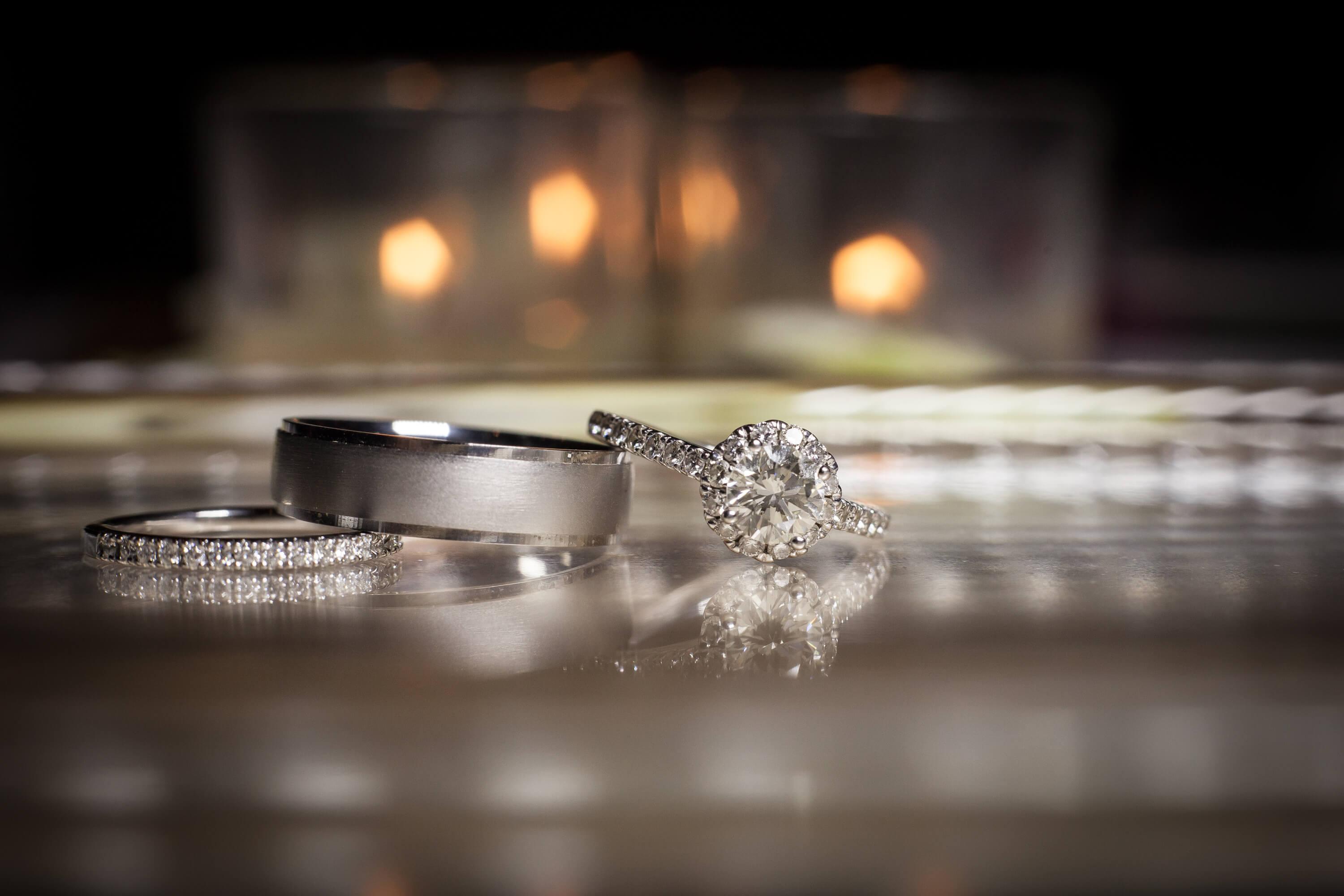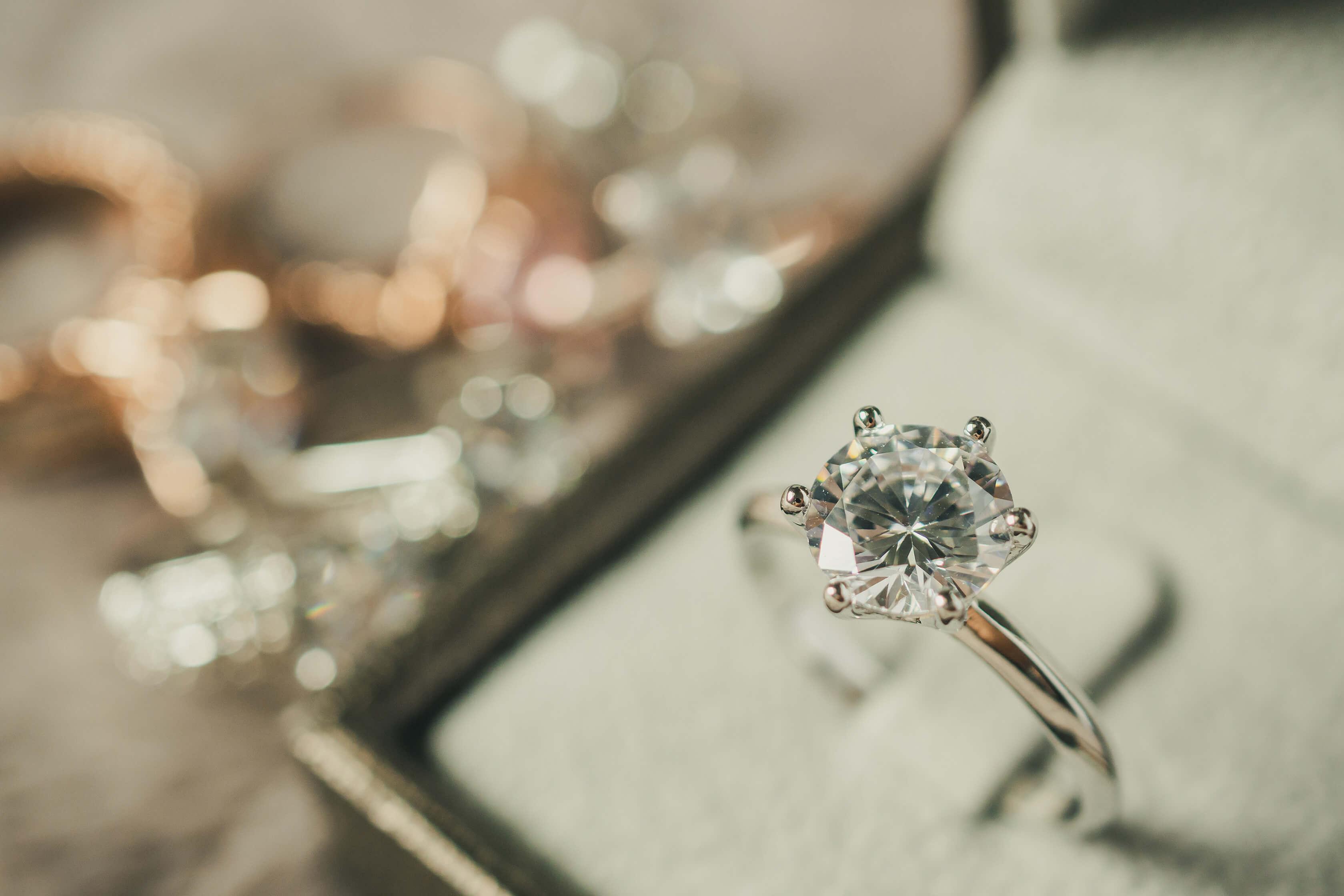
How to Buy An Ethical Engagement Ring Online
Congratulations on finding that special person you want to spend your life with! Now that it's time to get an engagement ring, you have almost infinite choices in styles, stones, and settings; but what about ethics?
If you are reading this article, then you are probably concerned about how your engagement ring affects the health and well-being of our planet and its inhabitants. Not all stones and metals have as beautiful an origin story as they do a brilliant sparkle. Some natural diamonds, gemstones, and precious metals are positively bloody.
Buying an ethical, lab-created diamond engagement ring is a choice you can be satisfied with for the rest of your life.
But what if you can’t get into a physical store to find one? How do you buy an ethical diamond engagement ring online?
You might also ask: what are the most ethical diamonds and how safe is it to buy an engagement ring online? That’s what we aim to answer in this article.
Buying diamond engagement rings online can be a difficult process if you are unsure of how selecting loose diamonds and settings from online retailers differs from walking into brick-and-mortar jewelry stores. Here in this article, we will go over some advice and information so that your delivered item is the perfect diamond ring for you.
How do you choose an Ethical Engagement Ring Online?
What makes an ethical engagement ring?
Ethics is an important study of right and wrong, though still largely debated. What makes something ethical may change from person to person. That's why, when buying an engagement ring online, you should know the ethical issues you want to consider.
That being said, here are the concerns for what we at Michael Gabriels consider ethical engagement rings:
- They are not made with materials or production practices that use forced labor or child labor, support conflict, or human rights violations.
- They are made incorporating and supporting their local economy and small businesses with fair wages and working conditions.
- They are environmentally responsible; made using sustainable materials and produced using sustainable methods.
How to Choose an Ethical Diamond Online:
Today you can choose between mined and lab-grown diamonds. While both forms of real diamonds can be produced to varying degrees of sustainability, lab-created diamonds are significantly more “ethical” in terms of their production and sale.
Are Lab-Grown Diamonds Real?
Lab-created diamonds are real diamonds that were grown in a lab. The only real difference between them and mined natural diamonds is their origin. Otherwise they are the same form of pure carbon crystals, and have the same chemical, physical and optical properties.
Why are lab-grown diamonds more ethical than mined diamonds?
Lab grown diamonds are easier to track, and provide more work than mines, especially since their operations can continue far longer than a mine, since their sources of production never run out. This means a job for life for many people, instead of work for a few years.
The laboratories that grow diamonds require employees and workers of significant education and high levels of skill. There are many engineers and scientists with a masters degree or higher, as well as employees working mid and low level skilled jobs. There is no child labor or forced labor used in the manufacture of lab-grown diamonds and gems.
Few laboratories today are located anywhere near conflict zones, or manufacture diamonds that are used to support conflicts. In addition to their more peaceful origin, they generally have less of an impact on the environment.
Though laboratories use large amounts of energy, they often have the option of sourcing their energy from more renewable sources than mines do. Lab-grown diamonds change fewer hands between production and resale, and cover fewer miles, so the energy required to take them to market is significantly less than what is necessary for mined diamonds. Laboratories use significantly less amounts of water and land than mined diamonds, and do not pollute land and water nearly as much as mines do.
By contrast, natural diamonds are often mined with disastrous and deadly consequences. Not only do artisanal mined diamonds account for almost all the forced labor and child labor in the diamond industry, they account for a large share of the conflict and blood diamonds in the world today.
The number of lives lost to diamond mining in the last century is estimated to be in the millions. This is a result not only from poor and unreasonable working conditions, but also from savage conflicts. Genocidal civil conflicts supported by diamond sales engulfed many African nations at the end of the 20th century, and now militant groups use diamonds to fund terrorism, and some countries also use diamond sales to fund conflicts.
Industrial mined diamonds also often have poor working conditions and low wages, and pose massive environmental problems. These operations are enormous, requiring vast areas of land, and so much water, they can strip an entire region.
Water usage and pollution accounts for one of the most hazardous effects of diamond mining, causing arable land to turn into deserts, forcing native populations to move, and utterly destroying the habitats for native plants and animals.
Few diamond producing countries ensure that mines return the land to its original condition, and many operations are not made responsible for, or else evade responsibility for damages caused by them. Nor do they turn over infrastructure to local inhabitants so they can benefit from it. When mines shut down, much of the operational infrastructure such as processing facilities, medical offices, power generation capabilities, and paved roads wastes away, or is deliberately destroyed.
The Problem with Kimberly
The Kimberley Process Certification Scheme was created as a result of the horrific conflicts funded by diamonds at the end of the 20th century and into the 21st. You may have seen the movie “Blood Diamond,” starring Djimon Hounsou and Leonardo DiCaprio that focuses on one of those conflicts, its horror, and the development of the Kimberley Process.
It is lauded by the mined diamond industry as a way to prevent conflict diamonds from reaching the market. But the KP defines conflict diamonds exclusively as those used by rebel groups in conflict with, or to overthrow, existing governments. This means that established governments who use the mining and sale of diamonds to fund conflicts are not assessed by the Kimberley Process, neither is child labor nor forced labor, taken into account.
Today, perhaps as much as or more than 35% of the mined diamonds available are sourced from countries currently in conflict, where diamonds may be used to support that conflict.
At least 3% of the diamonds on the market were mined using child labor.
Are there ethically produced mined diamonds?
Yes, to a certain extent, and with a caveat. Thankfully in the last couple of decades mining practices have improved, and in some parts of the world diamond mining still provides a significant source for many people. If this is an item you want, you will probably have to ask for it specifically. However be aware, mined diamonds that can be certified as ethical beyond the guidelines of the Kimberly Project- those produced with fair wages and working conditions without harming the environment or contributing to conflict- are very expensive, often thousands of dollars per carat. Since they are so limited, the options you’ll have to choose from will be much slimmer than for diamonds only certified by Kimberley or lab-grown.
Cost of lab diamonds versus mined diamonds
Lab-grown diamonds are significantly less expensive than their mined counterparts. You will pay thousands of dollars less per carat, and have available to you far more diamonds in sizes and qualities at affordable prices.
Want to wear a 13 carat stone, but don't have the hundreds of thousands or millions of dollars to purchase one? Don’t worry, only mined stones of that size cost that much. Lab-grown diamonds are monumentally less costly, though few retailers have access to sizes in excess of 10 carats. At Michael Gabriels we do have access to these stones and will be happy to provide you with a lab-grown diamond up to 50 carats in size.
Choosing Ethically and Sustainably Sourced Metals
When buying engagement rings online, don’t forget that it's not just the diamonds you want to worry about, but also the metals used. Recycled precious metals (and alloys) such as platinum, yellow gold, white gold and rose gold, are significantly more eco friendly and ethical than freshly mined metals.
In addition to problems of water, carbon emissions, conflict zones and land destruction, precious metal production operations use many toxic and caustic chemicals in the mining and refining processes. These can damage an environment so much it becomes uninhabitable.
Moreover, we have already mined more than three-quarters of the available gold deposits in the world.
What has been discovered- either mined already, or in known deposits- amounts to about 244,000 metric tons, according to the US Geological Survey. The problem is this: already mined gold makes up about 187,000 metric tons. That leaves 57,000 metric tons of known gold in the ground waiting to be processed. So there is not really very much left available and accessible for recovering through mining operations, which are largely located in sensitive environments and socio-economically sensitive regions.
You might then be asking- if so much gold has already been mined, where is it? The answer may surprise you. Today, a lot of the available (but unused) gold is stuck in landfills.
Yup, there's gold in them thar trash hills.
It is believed that more gold exists in garbage dumps in the form of disposed-of technological equipment than exists recoverable in fresh earth. And thankfully, there are plenty of people working to recover it using sustainable and ethical methods of production.
Aside from its origin, there is no difference between gold refined from the ground and gold refined from your old computer. Gold is gold is gold is gold.
It's also now a lot less expensive to recover gold from landfills, and many of those operations use less chemicals, water and energy than mining operations do. Moreover, unlike mining operations that destroy land, most recycling operations allow for land reclamation, which is a net positive!
This makes recycled metals a more assuredly ethical choice when you are buying an engagement ring, or any jewelry for that matter.
Supporting the Local Economy and Small Business
When buying an engagement ring, online or in person, supporting the local economy and the small businesses that make up the breadth of any economy has lasting socio-economic benefits that you will reap again later down the road.
The other advantage of using small and local businesses is that they will often have more time to work with you directly.
Choosing your ring
Beyond choosing ethically and sustainably produced materials and jewelers, there are a number of practical considerations to take into account when buying jewelry such as a diamond engagement ring online.
Settings
Style is Queen, and will be something you will live with for (hopefully) a very long time. Most online retailers will offer examples of their selection online that you can browse through. At Michael Gabriels we do that and offer customization for all of our products, as well as specializing in fully bespoke pieces. We are happy to work with you to make sure you get the perfect ring.
Ring sizing
When you are buying an engagement ring online, make sure that you have your ring size accurately measured. Many retailers offer some kind of measurement tool you can print out, or instructions on how to find your ring size at home. It is imperative that you find and use the correct size if you are shopping online.
How safe is it to buy an engagement ring online?
It is absolutely safe to buy an ethical and sustainable engagement ring or wedding ring online. You simply need to ensure that whomever you buy from is reputable: that they have certification for their stones and will provide it; a reliable delivery and return policy; and excellent customer service.
Recap: 3 Rules to keep in mind when buying an ethical engagement ring online
- Buy from companies that use lab-grown diamonds or who can trace their mined diamonds to the source and provide certification.
- Buy from companies that use eco friendly and ethical materials such as recycled metals, and can trace their metal production and certify that it was ethically sourced and has a low impact on the environment.
- Buy from companies that support their local economy and small businesses.
At Michael Gabriels:
Michael Gabriels specializes in custom jewelry and makes shopping online for fine jewelry easier, more straightforward, and affordable, while still providing the comfort of our physical store for those who would like to walk in. Please feel free to contact us online or on Instagram. We are happy to make an appointment with you so that we can give you undivided attention.
If you aren’t ready for that, browse our online showcases of ethical engagement rings in various styles, or start an inquiry to design your perfect ring with our bespoke and custom options.
We offer expedited shipping, with orders in the US processed and shipped within 5-7 business days, and overseas orders in about 7-16 days. While we aim to provide our clients with the perfect piece of jewelry, if a return is necessary we are happy to walk you through our process. We pride ourselves on working with each client individually to make sure that their experience with us is a happy and memorable one.
We are determined to provide consumers with lab-created, conflict-free diamonds and recycled metals. We have access to large lab-grown diamonds in excess of 10 carats, which we can make available to you at a fraction of the price of a mined diamond of equivalent weight.
We can, for those who specifically want them, find ethically and sustainably sourced, conflict-free mined diamonds (which will be much more expensive). We do not use mined gold and platinum since it is more ethical and economically viable for us to use recycled metals in all circumstances.
All of our products are produced by our local artisans and craftspeople, some of the most skilled jewelers in the world, located right here in New York City.
In addition, we make a computer-generated model, and a resin (plastic) model, that can be delivered to you. This way you get an idea of how your jewelry will actually look on you before we go ahead and set it in stone, or rather, set the stone (or stones) in it. That way alterations and modifications can be assessed and incorporated before the final product is finished.
If you are interested in buying a custom engagement ring we will be happy to assist you in any way possible. We are happy to make ourselves available to answer any questions you have, and to help you find or design the lab-grown diamond engagement ring of your dreams.



